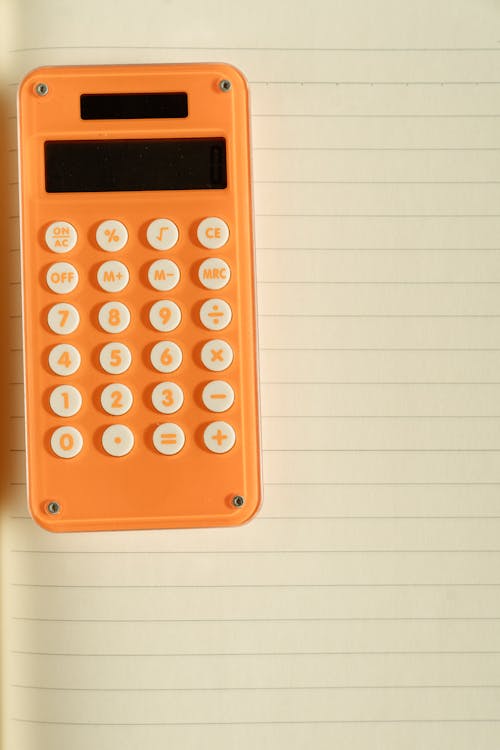Understanding Fraction Calculation
What is Fraction Calculation?
Fraction calculation involves performing mathematical operations such as addition, subtraction, multiplication, and division on fractions. A fraction consists of a numerator (top number) and a denominator (bottom number), representing parts of a whole.
Why are Fractions Important?
Fractions are fundamental in mathematics and real-life applications. They are used to represent ratios, proportions, measurements, and probabilities, making them essential in fields like engineering, finance, and science.
Basic Operations on Fractions
Fractions can be manipulated using four basic operations:
- Addition: Fractions with the same denominator are added by summing the numerators. If denominators differ, find a common denominator before adding.
- Subtraction: Similar to addition, ensure a common denominator before subtracting the numerators.
- Multiplication: Multiply the numerators together and the denominators together.
- Division: Invert (reciprocal) the second fraction and multiply.
Why Use Fraction Calculations?
Fractions are used in various scenarios, including:
- Solving mathematical equations involving proportions.
- Understanding ratios in financial and business calculations.
- Applying fractions in scientific measurements and experiments.
- Cooking and mixing ingredients with precise ratios.
Example
Basic Fraction Concepts
Fractions represent parts of a whole and consist of a numerator (top number) and a denominator (bottom number).
The general form of a fraction is: \[ \frac{a}{b} \] where \( a \) is the numerator and \( b \) is the denominator.
Example:
Given the fraction \( \frac{3}{4} \), the numerator is 3 and the denominator is 4.
Adding Fractions
To add fractions with the same denominator, simply add the numerators and keep the denominator:
\[ \frac{a}{c} + \frac{b}{c} = \frac{a + b}{c} \]
Example:
\( \frac{1}{4} + \frac{2}{4} = \frac{3}{4} \).
Subtracting Fractions
To subtract fractions with the same denominator:
\[ \frac{a}{c} - \frac{b}{c} = \frac{a - b}{c} \]
Example:
\( \frac{3}{5} - \frac{1}{5} = \frac{2}{5} \).
Multiplying Fractions
To multiply fractions, multiply the numerators and multiply the denominators:
\[ \frac{a}{b} \times \frac{c}{d} = \frac{a \times c}{b \times d} \]
Example:
\( \frac{2}{3} \times \frac{4}{5} = \frac{8}{15} \).
Dividing Fractions
To divide fractions, multiply by the reciprocal of the second fraction:
\[ \frac{a}{b} \div \frac{c}{d} = \frac{a}{b} \times \frac{d}{c} = \frac{a \times d}{b \times c} \]
Example:
\( \frac{3}{4} \div \frac{2}{5} = \frac{3}{4} \times \frac{5}{2} = \frac{15}{8} \).
Simplifying Fractions
A fraction is simplified when the numerator and denominator have no common factors other than 1.
To simplify \( \frac{6}{9} \), divide both the numerator and denominator by their greatest common divisor (3): \[ \frac{6 \div 3}{9 \div 3} = \frac{2}{3} \]
Example:
Simplify \( \frac{8}{12} \) by dividing both by 4: \( \frac{2}{3} \).
Converting Fractions to Decimals
To convert a fraction to a decimal, divide the numerator by the denominator.
\[ \frac{a}{b} = a \div b \]
Example:
\( \frac{3}{4} = 3 \div 4 = 0.75 \).
Converting Improper Fractions to Mixed Numbers
An improper fraction has a numerator greater than its denominator. Convert it into a mixed number by dividing the numerator by the denominator.
\[ \frac{a}{b} = q \text{ remainder } r \Rightarrow q \frac{r}{b} \]
Example:
\( \frac{7}{3} = 2 \frac{1}{3} \).
| Problem | Formula | Solution | Explanation |
|---|---|---|---|
| Addition of fractions: \( \frac{1}{4} + \frac{1}{2} \) | \( \frac{a}{b} + \frac{c}{d} = \frac{a \times d + c \times b}{b \times d} \) | Solution: \[ \frac{1 \times 2 + 1 \times 4}{4 \times 2} = \frac{2 + 4}{8} = \frac{6}{8} = \frac{3}{4} \] | Explanation: Convert fractions to a common denominator and simplify. |
| Subtraction of fractions: \( \frac{3}{5} - \frac{1}{4} \) | \( \frac{a}{b} - \frac{c}{d} = \frac{a \times d - c \times b}{b \times d} \) | Solution: \[ \frac{3 \times 4 - 1 \times 5}{5 \times 4} = \frac{12 - 5}{20} = \frac{7}{20} \] | Explanation: Convert fractions to a common denominator and subtract. |
| Multiplication of fractions: \( \frac{2}{3} \times \frac{4}{5} \) | \( \frac{a}{b} \times \frac{c}{d} = \frac{a \times c}{b \times d} \) | Solution: \[ \frac{2 \times 4}{3 \times 5} = \frac{8}{15} \] | Explanation: Multiply numerators and denominators directly. |
| Division of fractions: \( \frac{5}{6} \div \frac{2}{3} \) | \( \frac{a}{b} \div \frac{c}{d} = \frac{a}{b} \times \frac{d}{c} \) | Solution: \[ \frac{5}{6} \times \frac{3}{2} = \frac{5 \times 3}{6 \times 2} = \frac{15}{12} = \frac{5}{4} \] | Explanation: Multiply by the reciprocal of the second fraction. |
| Simplifying fractions: \( \frac{18}{24} \) | Divide numerator and denominator by their GCD (Greatest Common Divisor). | Solution: \[ \frac{18 \div 6}{24 \div 6} = \frac{3}{4} \] | Explanation: The GCD of 18 and 24 is 6, so dividing both by 6 simplifies the fraction. |
| Convert improper fraction to mixed number: \( \frac{11}{4} \) | \( \frac{a}{b} = q \frac{r}{b} \), where \( q \) is quotient and \( r \) is remainder. | Solution: \[ 11 \div 4 = 2 \text{ remainder } 3 \Rightarrow 2\frac{3}{4} \] | Explanation: Divide numerator by denominator to get quotient and remainder. |










